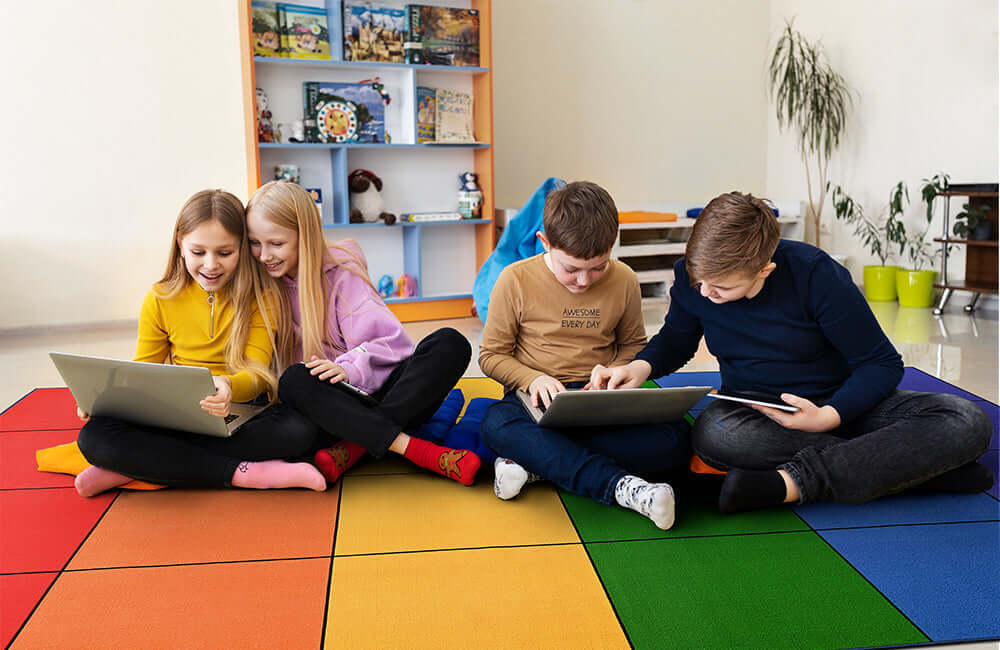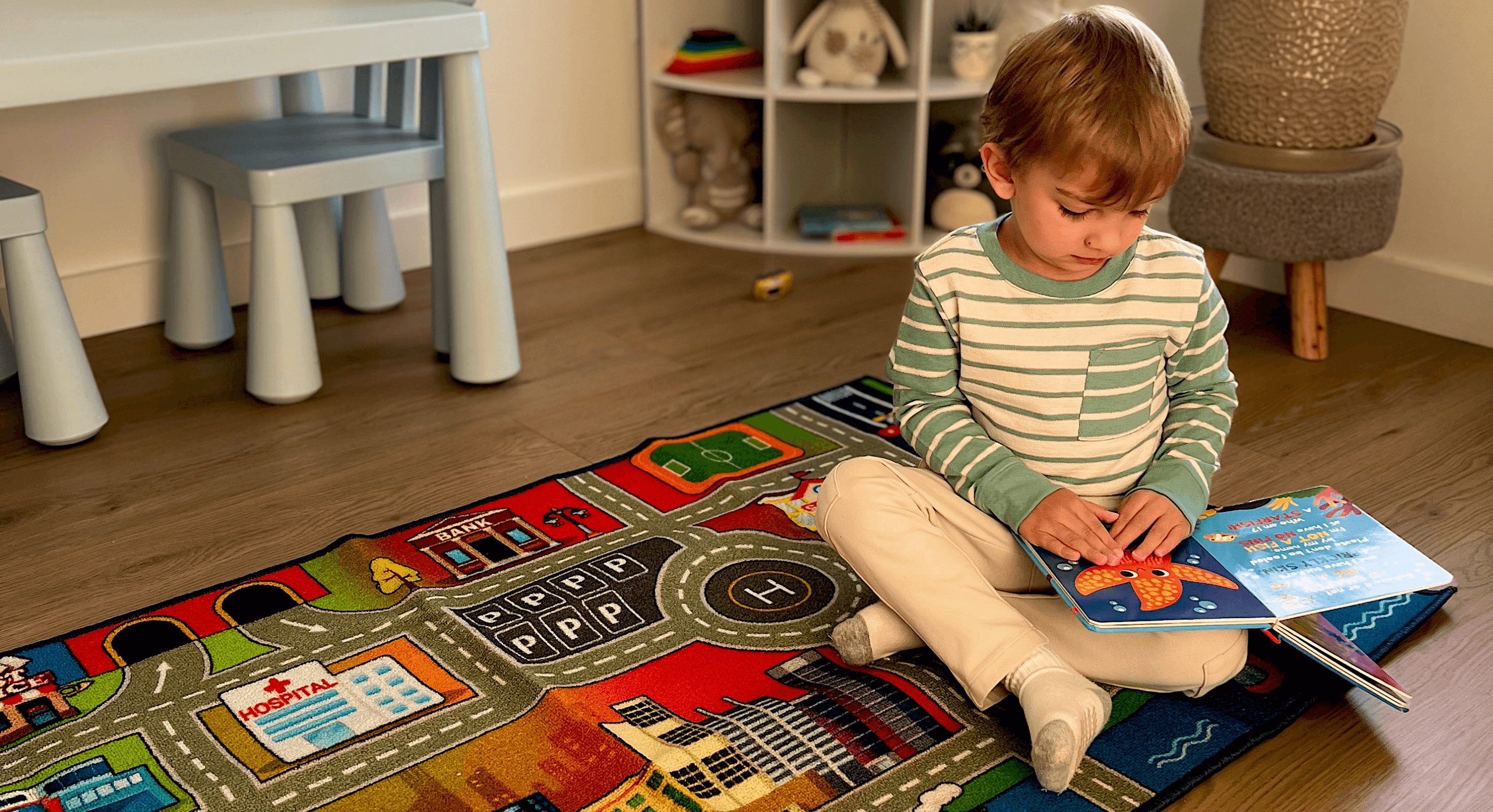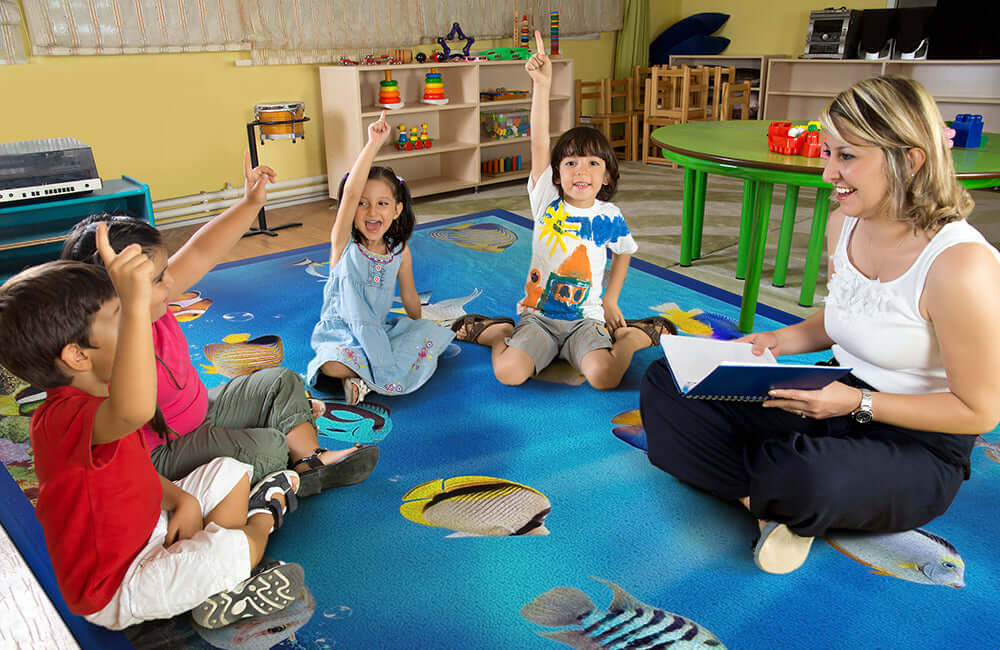Walk into any vibrant early childhood classroom, and one of the first things you'll notice is the colorful, inviting rug where children gather for story time, morning meetings, and collaborative activities. These aren't just decorative elements—classroom rugs serve as powerful educational tools that fundamentally transform how young learners experience their educational environment.
As educators and designers increasingly recognize the impact of physical spaces on learning outcomes, classroom rugs have evolved from simple floor coverings to intentional components of pedagogical strategy. In this article, we'll explore how these seemingly simple additions create significant changes in classroom dynamics, student engagement, and overall learning experiences.
The Psychology of Classroom Design
The physical environment of a classroom communicates powerful messages to students about what's expected and valued in that space. According to environmental psychology research from Western Washington University, classroom design elements like rugs create defined spaces that help children understand boundaries and transitions between different activities.
"The classroom environment serves as the third teacher," notes Dr. Maria Montessori, founder of the Montessori education approach. This concept emphasizes how thoughtfully designed learning spaces, including the strategic use of rugs, can guide children's behavior and learning without constant adult direction.
Benefits of Classroom Rugs
Creating Defined Learning Zones
Classroom rugs naturally delineate spaces for specific activities. A circular rug signals to children "this is where we gather," while a rectangular alphabet rug creates a dedicated space for literacy activities. These visual and tactile boundaries help young children, who thrive on routine and clear expectations, understand what's expected in each area of the classroom.
Promoting Comfort and Focus
Soft, cushioned rugs provide comfortable seating alternatives to hard chairs and desks. This physical comfort translates to improved attention spans and reduced fidgeting, particularly important for kinesthetic learners who process information better when they can sit in varied positions.
Enhancing Acoustic Properties
Classrooms are naturally noisy environments, and excess noise can significantly impair learning. Rugs absorb sound and reduce echoing, creating a more conducive listening environment for teacher instruction and student discussions. According to Wikipedia's article on classroom acoustics, proper sound management is crucial for effective learning, especially for younger students still developing language skills.
Supporting Social-Emotional Development
Gathering on a shared rug creates natural opportunities for community building and social interaction. The clear boundaries of a rug help children practice spatial awareness and respect for others' personal space—important social skills that develop during early childhood.
Types of Educational Rugs
Alphabet and Number Rugs
These classics feature letters, numbers, and sometimes simple words, providing constant visual reinforcement of literacy and numeracy concepts. During circle time, teachers can incorporate these elements into lessons by asking children to sit on specific letters or numbers.
Map and Geography Rugs
World map rugs or United States map rugs introduce geographical concepts in a tangible way. Children can physically sit on different countries or states during social studies lessons, creating memorable associations with locations.
Game and Activity Rugs
Rugs featuring game boards, hopscotch patterns, or mazes incorporate movement into learning. These designs encourage active participation and can be integrated into math lessons, physical breaks, or reward activities.
Calendar and Weather Rugs
These specialized rugs include elements like months, seasons, and weather symbols, creating a dedicated space for daily calendar routines that build time concepts and vocabulary.
Plain Solid-Color Rugs
Simple, solid-colored rugs have their place too. They minimize visual distractions for activities requiring intense focus and can be used to color-code different classroom zones.
Best Practices for Classroom Rug Placement
Consider Traffic Flow
Place rugs in areas with minimal foot traffic to reduce wear and tear. The ideal rug area should be accessible but not in pathways between high-use areas like the door, bathroom, or cubbies.
Ensure Size Appropriateness
The rug should be large enough to accommodate all students during group activities. A good rule of thumb is to allow approximately 18-24 inches of space per seated child on the perimeter of the rug.
Think About Lighting
Position rugs near natural light sources when possible, as reading and detailed activities benefit from good lighting. However, avoid placing rugs in direct sunlight, which can cause fading and create uncomfortable hot spots.
Create Clear Boundaries
Use furniture arrangement to reinforce the boundaries created by the rug. Bookshelves, low storage units, or cushions can help define the rug area as a special space within the larger classroom.
Maintaining Clean and Healthy Rug Spaces
Classroom rugs inevitably collect dirt, allergens, and occasionally spills. Regular maintenance is essential, not just for aesthetics but for student health.
Daily Care
Implement a quick daily vacuuming routine at the end of each school day to remove surface debris. Consider establishing class jobs where older students can help with this responsibility.
Deep Cleaning Schedule
Plan for deeper cleaning during school breaks. Hot water extraction (steam cleaning) every 3-6 months is recommended for most classroom rugs to remove embedded dirt and allergens.
Addressing Spills Promptly
Keep a simple spill kit nearby containing absorbent cloths, gentle cleaning solution, and a scrub brush. The faster spills are addressed, the less likely they are to become permanent stains.
Choosing Antimicrobial Options
When purchasing new classroom rugs, look for those with antimicrobial treatments or made from materials that naturally resist bacteria and mold growth, particularly important in early childhood settings where children frequently sit on the floor.
Budget-Friendly Options
Quality educational rugs can be significant investments, but there are ways to incorporate them into classrooms on limited budgets:
Grant Opportunities
Many education foundations and teacher grant programs specifically fund classroom environment improvements. Organizations like DonorsChoose help teachers crowdfund for specific classroom needs, including rugs.
DIY Alternatives
For extremely limited budgets, consider alternatives like:
- Repurposing clean, used area rugs donated by families
- Creating temporary "rug spaces" using interlocking foam tiles
- Using painter's tape to create visual boundaries on existing flooring
Focus on Versatility
If budget allows for only one rug, choose a design that serves multiple purposes rather than specialized educational designs. A simple, durable rectangular rug in a neutral color provides the comfort and boundary-setting benefits while remaining versatile for various activities.
Conclusion
The humble classroom rug does far more than decorate a space—it fundamentally shapes how children experience their learning environment. By creating defined spaces for collaboration, providing sensory comfort, and offering embedded learning opportunities, strategically selected and placed rugs become powerful tools in the educator's arsenal.
As you consider updates to your learning spaces, remember that the right rug isn't merely an accessory but an intentional pedagogical choice that can enhance engagement, comfort, and learning outcomes for your students. Whether you're designing a new classroom or refreshing an existing space, the thoughtful incorporation of educational rugs deserves careful consideration as part of your overall classroom design strategy.
Want to learn more about optimizing classroom design? Check out our related articles on child-friendly furniture and classroom lighting strategies.




Leave a comment
This site is protected by hCaptcha and the hCaptcha Privacy Policy and Terms of Service apply.